Original Copy
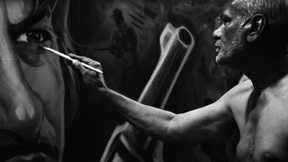 GERMANY / 2015 / Hindi, English / Color / Blu-ray / 95 min
GERMANY / 2015 / Hindi, English / Color / Blu-ray / 95 min
Directors, Script, Producers: Florian Heinzen-Ziob, Georg Heinzen
Photography: Enno Endlicher
Editing: Florian Heinzen-Ziob
Sound: Robert Keilbar, Kai Holzkämper
Production Company: polyphem Filmproduktion
Source: MAGNETFILM
In the heart of Mumbai lives Sheikh Rehman, the city’s last painter of film sign boards. His studio is run in the old masters’ style—behind the screen of an old Hindi film cinema. Here, Rehman is both artist and guru, comedian and philosopher. But modernity is taking over and the generations of audiences that have come to the movies for refuge and entertainment are dwindling. With the theater facing potential demolition, marketing has turned to plastic signs to lure in more people, replacing the need for Rehman’s original work. It’s a hopeless struggle but Rehman won’t give up. The figure of Rehman embodies the theme of heritage.
The Future of Southeast Asia’s Film Archives
Behind the Flickering Light (The Archive)
Anak Sabiran, Di Balik Cahaya Gemerlapan (Sang Arsip)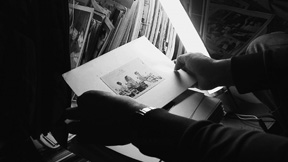 INDONESIA / 2013 / Indonesian / Color / Apple ProRes File / 155 min
INDONESIA / 2013 / Indonesian / Color / Apple ProRes File / 155 min
Director, Script, Editing, Producer: Hafiz Rancajale
Photography: Syaiful Anwar
Appearance: Misbach Yusa Biran, Mahardhika Yudha, Fuad Fauzi, Hafiz Rancajale
Source: Forum Lenteng
This film depicts the life of Misbach Yusa Biran, a major force in the screening and preservation of film in Indonesia. It explores the intersection of Indonesian film history with the story of the legendary and passionate archivist who established Sinamatek Indonesia, Southeast Asia’s first film archive, under difficult political and economic circumstances.
Nitrate Flames
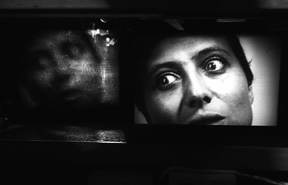 NORWAY, ARGENTINA / 2014 / English, Spanish, French, Danish / Color, B&W / Apple ProRes File / 63 min
NORWAY, ARGENTINA / 2014 / English, Spanish, French, Danish / Color, B&W / Apple ProRes File / 63 min
Director, Script: Mirko Stopar
Photography: Diego Poleri
Editing: Torkel Gjørv
Sound: Håkon Lammetun
Music: Santiago Pedroncini
Art Director: Yamila Fontán
Producers: Tore Buvarp, Peter Bøe
Source: Norwegian Film Institute
What ever happened to Dreyer’s Joan of Arc? Renée Falconetti’s face is one of the most iconic in the history of cinema. Nitrate Flames is an archive-based film that follows Falconetti’s path from the bright lights of Paris in the 1920s to the shadows of Buenos Aires in the 1940s, where she ended up in misery and oblivion, tracking a parallel with the fate of the original print of Dreyer’s masterwork The Passion of Joan of Arc (1928), which resurfaced in a Norwegian mental institution only in the early 1980s.
France Is Our Mother Country
La France est notre patrieImages of the Orient—“Vandal Tourism”
Images d’Orient—“Toursime Vandale”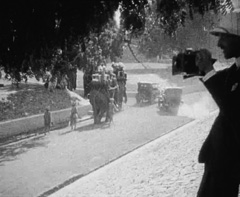 ITALY, FRANCE / 2001 / French / Color, B&W / Apple ProRes File (Original: 16 mm) / 62 min
ITALY, FRANCE / 2001 / French / Color, B&W / Apple ProRes File (Original: 16 mm) / 62 min
Directors, Script, Editing, Source: Yervant Gianikian, Angela Ricci-Lucchi
Voice: Giovanna Marini
Music: Giovanna & Francesco Marini, Luis Agudo
Text: Henri Michaux, Mircea Eliade
Supported by: Tele+
Production Company: Arte France
Yervant Gianikian and Angela Ricci-Lucchi carefully comb archives for “found footage” that they color and re-edit into their own works. Focusing on the wars and the colonies of the early twentieth century, their films reweave history, infusing it with poetry, as if to bring it new life. In Images of the Orient they deconstruct the portrait of an English bourgeois family that was recorded in India in 1928 and 1929, during the rise of the anti-colonial movement. They overlay footage of the family and of their close friends with pieces of text taken from the work of Henri Michaux and Mircea Eliade, as sung by Giovanna Marini. The combination reveals the English family’s exotification of the “other.” In the depths of each photogram—that is, in the background of every image—we find its traces. Alongside the rich, who display themselves unselfconsciously before the camera, we also see images of the poor, of the exploited land and soul of India, as well as workers and children. The colonial tourism that is portrayed here and in their film Pays barbare (2013), differed starkly from that which took place during the Age of Discovery. The mass craving for tourism quickly turned barbaric and engulfed the times.
Discovering Images—The Age of Matsumoto Toshio
(Eizo no hakken, Matsumoto Toshio no jidai)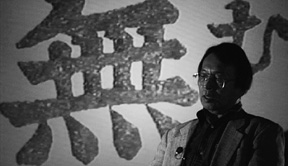 JAPAN / 2013 / Japanese / Color / Blu-ray / 700 min
JAPAN / 2013 / Japanese / Color / Blu-ray / 700 min
Part 1: Documentary Film (137 min), Part 2: Expanded Cinema (153 min), Part 3: Feature Films (140 min), Part 4: Experimental Cinema (109 min), Part 5: A New Wave (161 min)
Director: Tsutsui Takefumi
Producer: Takei Tomi
Photography: Segawa Ryu, Onodera Makoto, Suzuki Tatsuo
Lighting: Ichikawa Motokazu
Sound: Yamazaki Shigeki
Assistant Director: Kaji Kozo
Editing: Yamazaki Azusa
Sound Design: Morinaga Yasuhiro
Title Design: Uemura Koji
Appearance: Matsumoto Toshio, Kawamura Kenichiro, Fujiwara Tomoko, Yuasa Joji, Kanze Hideo, Ichiyanagi Toshi, Sasaki Mamoru, Kudo Mitsuru, Takayama Hideo, Hatakeyama Shigeru, Hatano Testsuro, Kawanaka Nobuhiro, Kanai Masaru, Watanabe Tetsuya, Sasaki Tsukasa, Kikuchi Shigeru, Oshikiri Takayo, Chujo Shohei, Sakajiri Shohei, Nishijima Norio, Matsumoto Masamichi
Production Company: Production Bamboo
Source: Tsutsui Takefumi
As the first in Japan to use the term eizo sakka (loosely translates as “artist of the moving image”) to describe himself, Matsumoto Toshio (1932–) began his career in documentary film, gradually incorporating experimental methods into his work and going on to assume a major role in the establishment of a Japanese cinematic avant-garde. Published in 1963, his first collection of essays The Discovery of the Image (Eizo no hakken) showcased his film theory from 1958 to 1963, not only influencing aspiring young filmmakers, but also inspiring heated debate between Matsumoto and the likes of Ishido Toshiro and Oshima Nagisa. This film illustrates Matsumoto’s capacity as a leading theoretician, but it also follows the expansion of his interests into radio, television, theater, TV commercials, expanded cinema, feature films, experimental cinema, and installation art, in an attempt to undertake a rereading of postwar film history. Research for the film began in 2003 and continued until 2013, assimilating materials from broad retrospectives held at the Kawasaki City Museum (2006) and the Kuma Museum of Art (2012).
